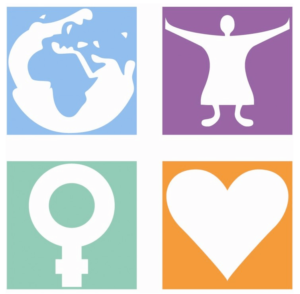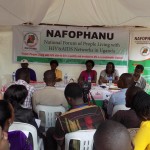As the World first celebrates the 27th World AIDS Day today, The ICWEA family humbly honors our dear sisters who lost their lives to the AIDS scourge over the years. We applaud those who continue to tirelessly fight for an end to the HIV&AIDS epidemic. The theme of this year’s World AIDS Day is “Hands up for HIV prevention”. The theme is quite timely and coming at the time when the number of new HIV infections especially among young people (particularly adolescent girls and young women) is skyrocketing and/or increasing, which becomes a threat to the progress made in the past decades. A UNAIDS report “Get on The Fast Track – The Life Cycle Approach to HIV” reveals that girls’ transition to womanhood is a very precarious time, particularly in sub-Saharan Africa. “Young women and adolescent girls are facing a triple threat. They are at high risk of HIV infection, have low rates of HIV testing, and have poor adherence to treatment. The world is failing young women and adolescent girls; and we urgently need to do more,” said Michel Sidibé (UNAIDS Executive Director) during the release.
Doubtlessly, HIV prevention is the key to ending the AIDS epidemic among young women and adolescent girls; and the cycle of HIV infection needs to be broken at individual, family and community level. But even with such a setback, a lot of progress has been made in the HIV&AIDS response especially around care and treatment. UNAIDS reports an increase in the number of people getting treatment to more than 18 million people out of the 36.7 million living with HIV worldwide and new HIV infections among children continue to fall. As such, the world has sent 2030 as the year by which HIV&AIDS should end.
On the other hand and based on our daily lived experiences and research, it is known that a fraction of Women living with HIV are not given sufficient options and choices with respect to their Sexual Reproductive Health and Rights (SRHR). In fact, a report published by ICWEA titled “Violations of Sexual Reproductive Health and Rights of Women Living with HIV in community and clinical settings in Uganda” found out that women living with HIV experience forced and coerced sterilization – a violation of their human rights. Courts of Law in Kenya are currently handling similar cases of forced and coerced sterilization. Women are forced to use certain FP methods and are neither allowed to choose nor are they given sufficient information about particular FP methods. Such acts deter women living with HIV from accessing health facilities for SRHR service and information which affects HIV prevention efforts. Women living with HIV (particularly adolescent girls and young women) should be enabled to access and enjoy their SRHR for effective results from programmes like eMTCT. Uncertainty about some health care methods frustrates HIV prevention efforts. We therefore call upon the global community including World Health Organisation to hasten the decision making processes regarding hormonal contraceptives.
It is also important to note that certain HIV prevention efforts should look at individuals in totality. Solutions for communicable diseases like cancer and diabetes etc. that are becoming a menace to PHAs should be found. There is also an urgent need to address other critical challenge that affect the HIV response like the tuberculosis epidemic, gender based violence, which are a cause and consequence of HIV epidemic.
HIV prevention requires massive resource investment, and we therefore call upon governments to invest in the response and among other things, facilitate use of other HIV prevention tools and methods and make them accessible to the vulnerable people such as adolescent girls and young women.
Ending HIV&AIDS epidemic will be a reality ONLY and ONLY if adolescent girls and young women are placed at the centre of the response



